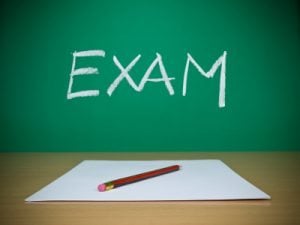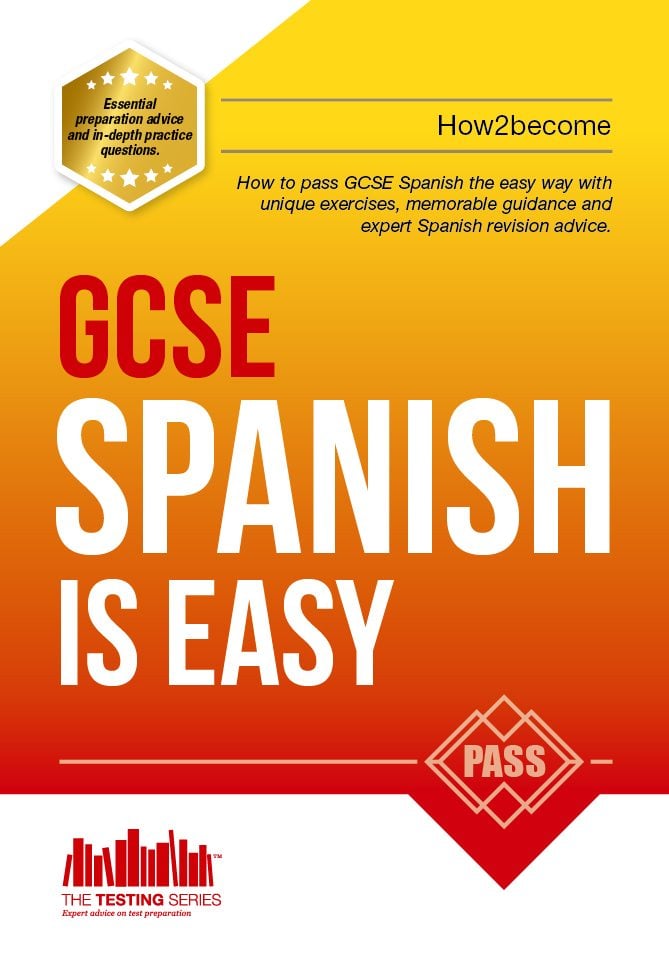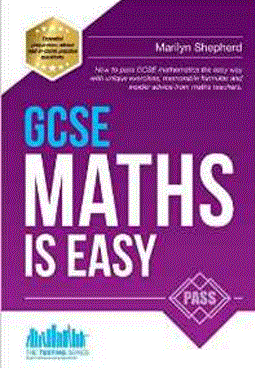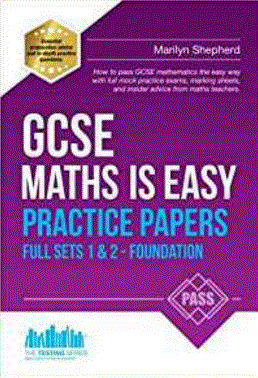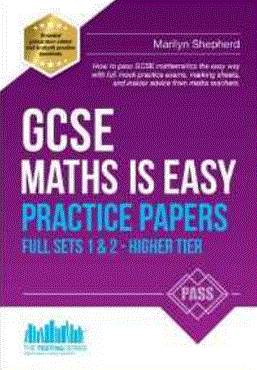Successful GCSE examination results can provide your child with positive foundations upon which to build their future career and pursue higher education. In order to help your child achieve their full academic potential, here is a guide to GCSE Examinations. In this revision blog, it will help consolidate your knowledge of the basic principles behind GCSEs. The blog will also provide revision techniques and exam advice to help your child prepare effectively for GCSE revision.
The blog will cover the following elements:
• A Guide To GCSE Examinations For Parents
• GCSE Subjects
• The New Grading System
• GCSE Exam Boards
• GCSE Key Features And Changes
• Learning Styles For Revision
• Examination Advice
• GCSE Resources
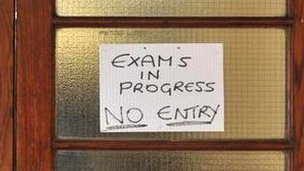
General Certificates of Secondary Education (GCSEs) are internationally recognised awards given to students who achieve a pass grade in their exams, coursework and other materials. GCSEs are taken by students in England and Wales, and cover material which is more advanced than the Key Stage 3 (KS3) curriculum, but less intense than A-Level and other higher education qualifications.
GCSEs are available for a broad range of subjects, including the ‘core’ subjects of English, Maths and Science. Additionally, subjects such as Art, History and Media Studies are available to be studied at GCSE level. However,these subjects’ availability may differ depending on the school. Most students will be familiar with the bulk of these subjects from being taught them at KS3, although there are a few new subjects that are available.
There are mandatory subjects which ALL students will HAVE to take at GCSE level:
• English (Language and Literature)
• Science (Biology, Physics, Chemistry)
• Maths
The following subjects are also available at GCSE. None of these are compulsory, but you must take some of them:
• Art
• Business Studies
• Classics
• Design & Technology
• Drama
• Geography
• Health and Social Care
• History
• ICT
• Latin
• Law
• Media Studies
• Modern Foreign Languages (such as French, Spanish or German)
• Music
• Physical Education
• Politics
• Psychology
• Religious Studies
• Sociology
• Statistics
• Welsh
GCSEs are part of the National Qualifications Framework and at the end of the two-year course, candidates receive a grade for each subject upon which they have been examined. In previous years, these grades were A*s to Us. Now, the grading system has changed and uses numbers instead of letters. The new 9-1 grade system has been brought in by the government to help create differentiation between grades, particularly those scoring high grades. Grade 9 is classed as the highest, being set above the current A*.
Below I have created a quick breakdown of the new grading system, compared to the old grade system.
 For more information on the new 9-1 grading system, please click the following link.
For more information on the new 9-1 grading system, please click the following link.
There are five examination boards which offer GCSEs, listed as follows:
- Assessment and Qualifications Alliance (AQA)
- Oxford, Cambridge and RSA Examinations (OCR)
- Edexcel
- Welsh Joint Education Committee (WJEC)
- Council for the Curriculum, Examinations & Assessment (CCEA)
All of these examination boards are self-sufficient organisations which are regulated by the Office of the Regulators of Qualifications (Ofqual) – a non-departmental public body sponsored by the Department for Education. The Joint Council for Qualifications (JCQ) acts as a single voice for the awarding bodies and assists them to create common standards, regulations and guidance.
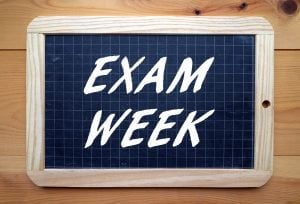
Students receive their GCSE results in the fourth week of August (the week after A Level results). Traditionally, students go to their school to collect their results, although Edexcel allow for the option of an online results service.
Since the summer of 2013, GCSE examinations have moved away from coursework and classwork based assessments, in favour of exams that are sat at the end of most two-year courses. January and March examinations have also been removed.
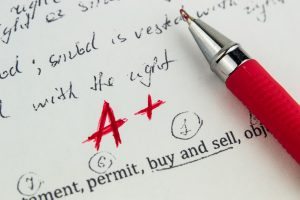

Key structural features of the current GCSEs
Below, I have listed the key structural features of the current GCSEs:
• A NUMBERED GRADING SCALE: this system uses the numbers 1–9 in order to identify their levels of performance. 9 is regarded as the top level, and in the eventuality that a student’s performance is below the minimum required to pass a GCSE, they will receive a U.
• TIERING: Tiering is only used for subjects ‘where untiered papers will not allow students at the lower end of the ability range to demonstrate their knowledge and skills, or will not stretch the most able’. English literature and English language are currently untiered. Maths is tiered with an ‘improved overlapping tiers model’, with a foundation tier covering grades 1-5 and a higher tier covering grades 4–9.
• LINEAR GCSEs: all assessments are now taken at the end of the course in the Summer. Re-sit opportunities in November are available for English language and maths only.
• ASSESSMENT BY EXTERNAL EXAM: this will be the only method of assessment, will the removal of assessments such as coursework.
• The first assessment of new two-year GCSE courses which start in September 2016 will be in June 2017.
• New GCSEs in the sciences, history and geography, as well as languages, are scheduled to begin teaching in September 2016 with first assessment taking place in 2018.
The content of these new GCSEs, as announced by the DfE, features:
• MATHS: this subject will be adapted to focus primarily on solving problems which require multi-step solutions. New topics will also be introduced such as ratio and proportions. Furthermore, students will be expected to learn key mathematical formulae by heart.
• ENGLISH LANGUAGE: students will be required to study a wide range of texts and more emphasis will be placed upon spelling, punctuation and grammar. Previous ‘set texts’ will no longer be followed.
• ENGLISH LITERATURE: this subject will no longer be compulsory. Moreover, its content will be adapted to focus upon four areas of ‘classic literature’ with the additional requirement of ‘unseen texts’ in the examinations.

In order to organise productive revision sessions which cater to your child’s specific academic needs, it is helpful if you can ascertain your child’s preferred learning style. It has been scientifically proven that there are seven different learning styles, listed as follows;
- Visual (spatial): the use of pictures or images to remember and recall information,
- Aural (auditory-musical): the use of sound and music to remember and recall information,
- Verbal (linguistic): the use of words, both in speech and writing, to understand and impart information,
- Physical (kinaesthetic): the use of physical actions to assimilate information, for example- associating facts or figures with body or hand gestures,
- Logical (mathematical): the preferred use of logic, reasoning and systems to assimilate information,
- Social (interpersonal): working best in groups or with other people,
- Solitary (intrapersonal): preferring to work alone and use self-study.
As a result, it is important that you introduce your child to a diverse range of revision practices in order to ascertain which method is most effective for them at retaining knowledge. Popular revision techniques include; mind mapping; flash cards; making notes; drawing flow charts and diagrams. You could instruct your child on how to turn diagrams and pictures into words, and words into diagrams. Try as many different methods as possible to see which is most successful for your child’s learning style.
After revising a topic, it is crucial that you test your child to see whether their learning style has worked. There are a plethora of valuable online functions, such as past paper archives and revision tools and resources, which you can access in order to test your child’s knowledge. By doing so you can help to consolidate their confidence in their own academic abilities.
Secondary schoolteacher and Revise UK tutor Sally Sim advocates the importance of creating a comprehensive revision structure for your child. She states;
“Oral exams for languages are early on, so during Easter you should be prioritising those at the expense of whatever exam comes last, whether it’s religious studies or history…Work out your timetable so once you’re past that date you can ditch the subject and put a later one into that slot.” In order to find out your child’s exam dates, you can contact your school or search online via education.gov.uk/comptimetable.
When creating a revision timetable, it is fundamental that you prioritise topics which your child finds difficult. By visiting the examination board websites for each GCSE subject, you and your child can access curricula, marking schemes and example answers from previous exam years, complete with the original examiner’s annotations and marks. By doing so, you can create an efficient revision timetable which actively targets problematic subjects and allocates time towards developing a comprehensive understanding of these topics.
During your child’s examination period, it is crucial that they are equipped with the necessary equipment in order to perform well during their exams. It is also important that they are completely aware of examination procedures, rules and regulations.
Below I have outlined what you will and won’t need for your GCSE exams:
• EQUIPMENT: upon entering an examination, it is necessary for your child to be equipped with; pens, pencils, ruler, rubber, pencil sharpener, highlighters and spares. All of which must be visible within a clear pencil case or bag. Calculators are allowed for all examinations with the exception of the Maths non-calculator paper. It is worthwhile to check your child’s calculator works and has new batteries before entering the examination as it is not guaranteed that spares will be provided.
• PROHIBITED ITEMS: the following items are NOT allowed to be taken into examination conditions; Mobile phones, IPods, MP3/4 players, reading pens, calculator cases or lids, all electronic communication or storage devices, correcting pens, fluid or tape. As students enter the room, these items are collected and a warning about unauthorised materials is read out. After this stage, if these items are found in your child’s possession they risk disqualification from that subject award. Items which have been collected as students enter the room are stored in the exam room by the invigilators and students can collect them after the examination. However, it is advisable that students do not bring any unnecessary equipment or items into school when sitting an examination.
• EXAMINATION TIMETABLES: ensure that your child has copies of their examination timetable. This document will inform them of their seat numbers as well as acting as form of identification when they enter each examination.
• INK COLOUR: it is advised that students write in black ink due to exam scripts being scanned and marked online. Black ink is more visible than other inks or pale coloured gel pens and reduces the risk of your child losing marks due to illegible handwriting or ink discrepancies.
• FOOD AND DRINK: neither food nor fizzy drinks are allowed during examinations. Students are allowed to take in water, but it must be in a clear water bottle with all of the labels removed.
• ILLNESS OR INJURY: if your child sustains an injury which impedes their writing skills, such as breaking their arm, inform the school as soon as possible. Meausures will be put in place, and a scribe will be provided. If a student is too ill to sit an exam, they may still be able to receive a grade, provided that they have completed 35% of the assessment for the course. If this is the case for your child, you must contact the Exams Office immediately. You will be asked to present confirmation from a doctor of the precise nature of the illness at the time of each exam. The Exams Office will need to know when the illness started and how long it lasted in order to assess the validity of each claim.
It is important that you contact your child’s school and teachers for their specific information and examination procedures. For further information regarding GCSE examinations, as well as access to online learning resources and past paper materials, you can visit Directgov , BBC Bitesize or the specific examination boards for each of your child’s chosen subjects.
I hope you found this guide to GCSE examinations helpful.
image credits: Flickr.com
